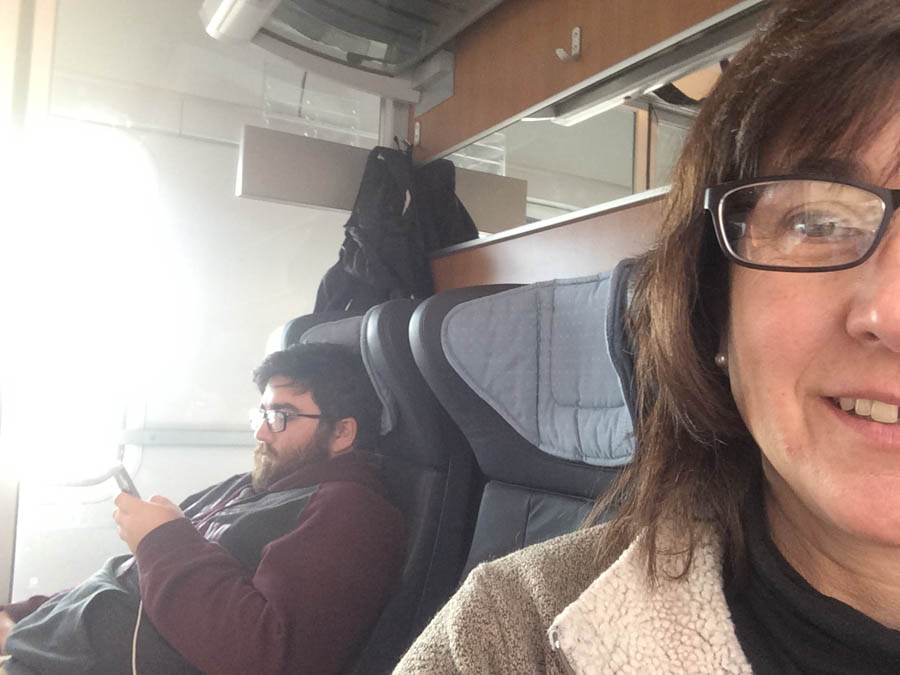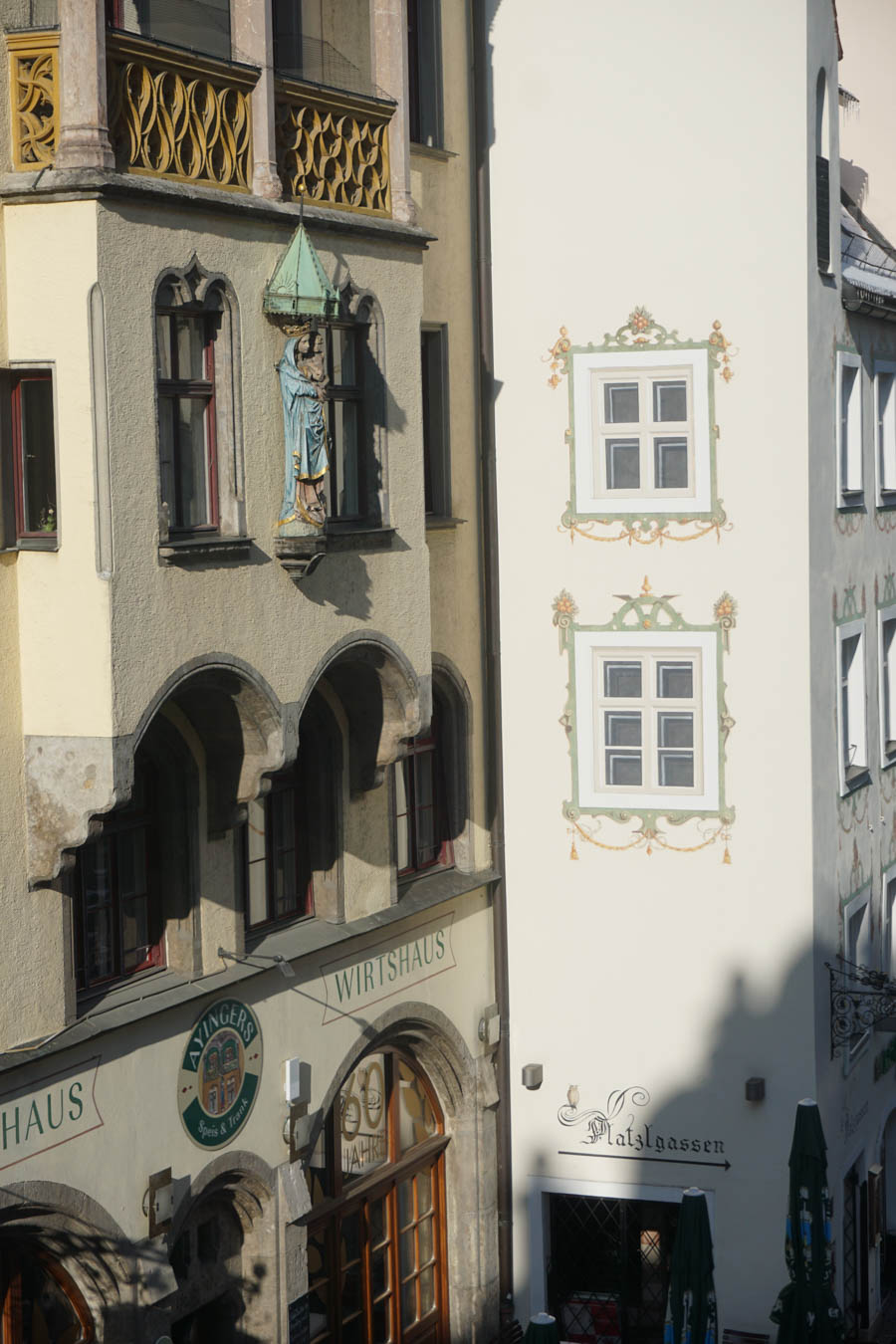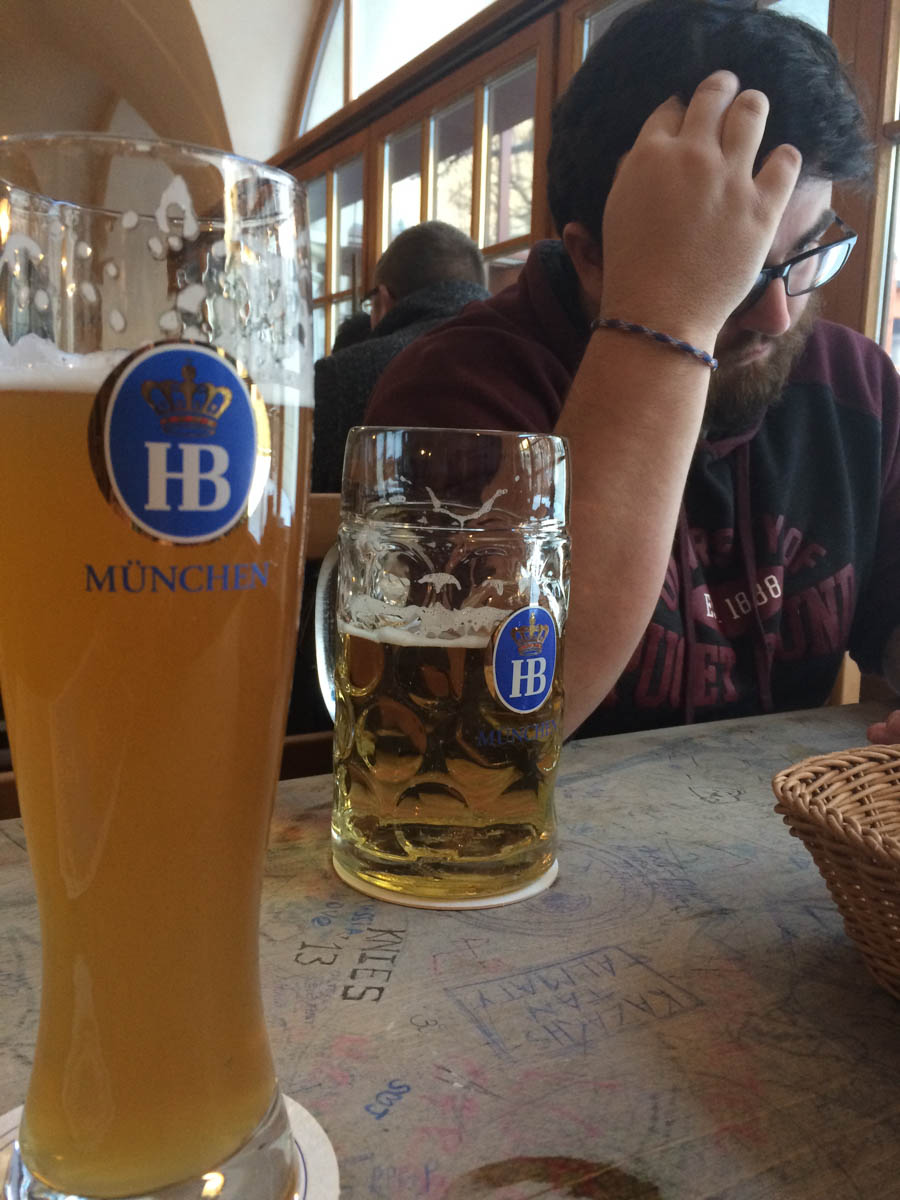It's The 20th... Let's Escape Berlin! How About Munich? (Page Three)


The train makes for a quick trip (Many stops)
Did You Know? - The train ride from Munich to Berlin takes about 6 hours with Germany's fastest ICE train which reaches speed up to 300 kilometer per hour. This may seem a bit surprising as France's trains can travel from Paris to Marseille (a similar distance) in roughly 3 hours. The truth is, Germany is densely populated and though the trains move fast, even the ICE stop frequently to serve the populace. Settle in and enjoy the ride. Seating is comfortable, the countryside is beautiful and wifi is available on board.

Catching the train...
Did You Know? - ICE (ICE: Inter-City-Express) high-speed trains run twice an hour from Berlin to Munich. One is direct, while the other has a short stop in Nuremberg, which is well worth seeing. Reservations are not required, but I recommend making one if you're traveling on the direct train, especially on Fridays or Sundays, when trains are often full. The reservation fee for Eurail Pass Holders is 4 euros.

Zipping right along with the great German efficiency!

"I'm not so good at the selfie OR I was only half here?"
Did You Know? - Leipzig is the largest city in the federal state of Saxony, Germany. With a population of 570,087 inhabitants (843,619[4] residents in the larger urban zone) it is Germany's tenth most populous city.
Leipzig is located about 160 kilometres (99 mi) southwest of Berlin at the confluence of the White Elster, Pleisse, and Parthe rivers at the southern end of the North German Plain.
Leipzig has been a trade city since at least the time of the Holy Roman Empire.
The city sits at the intersection of the Via Regia and Via Imperii, two important medieval trade routes. Leipzig was once one of the major European centers of learning and culture in fields such as music and publishing.
Leipzig became a major urban center within the German Democratic Republic (East Germany) after the Second World War, but its cultural and economic importance declined.

We made it safely to Leipzig
Did You Know? - The train journey to Leipzig from Berlin takes just under 75 minutes. One of the city's most impressive sights greets you the second you get off the train – the central station. One of the largest terminus train stations in Europe, it offers state-of-the-art shopping. Also worth checking out are Leipzig's Old Town and the Monument to the Battle of the Nations, the largest memorial complex in Europe.

Winter in Germany is leafless

Snow everywhere

Castles on the hills

Nurnberg Station
Did You Know? - You can take a direct ICE train from Berlin to Nuremberg in just under 5 hours. This 11th-century city features many medieval sights. The highlight is the Imperial Castle (Kaiserburg), which was one of the most important fortified palaces of the Old Holy Roman Empire.
The medieval dungeons are also worth exploring. Visit Nuremberg in December to check out one of Germany's most famous Christmas markets. You'll also get to taste what's arguably the best gingerbread in the entire country! This is one of the best stops from Berlin to Munich.

Looks like a great place for sleigh ride!


Home sweet home in Schwanthalerhöhe Munich for a while!
Did You Know? - Schwanthalerhöhe, also called Westend, is a borough of Munich. It is located west of the city center and with a population of about 30,000 on just two square kilometers is one of Munich's most densely populated boroughs. It is located west of the city center and with a population of about 30,000 on just two square kilometers is one of Munich's most densely populated boroughs.

It's getting dark.... Must be time to eat

Did we say food???
"Who put the hair ball in my dish?"

Needed for the cold evening
January 20th, Time To Walk! A Visit To The Town Hall Is First!

Town Hall is huge!

The New Town Hall
Did You Know? - The New Town Hall (German: Neues Rathaus) is a town hall at the northern part of Marienplatz in Munich, Bavaria, Germany. It hosts the city government including the city council, offices of the mayors and part of the administration. In 1874 the municipality had left the Old Town Hall for its new domicile.

Surrounded by other old buildings

Come on in.... You are welcome
Did You Know? - It was built between 1867 and 1908 by Georg von Hauberrisser in a Gothic Revival architecture style. It covers an area of 9159 m² having 400 rooms. The 100 meters long main facade towards the Marienplatz is richly decorated. It shows the Guelph Duke Henry the Lion, and almost the entire line of the Wittelsbach dynasty in Bavaria and is the largest princely cycle in a German town hall. The central monument in the center of the main facade between the two phases at Marienplatz above the guard house, is an equestrian statue of Prince Regent Luitpold. The bay of the tower contains statues of the first four Bavarian kings.
The basement is almost completely occupied by a large restaurant called Ratskeller. On the ground floor, some rooms are rented for small businesses. Also located in the ground floor is the major official tourist information.

Many offices are located on the ground floor of the hall

On we go!

Little stores are located everywhere

The plaques tell the history of the area

Clock towers are all over...

Huge doors at St. Benno located in Maxvorstadt

We keep on walking... and walking..... and walking

The Alter Hof (Old Court)

A painting of Alter Hof (Old Court).... By Aldolph Hitler
Did You Know? - The Alter Hof (Old Court) in the center of Munich is the former imperial residence of Louis IV, Holy Roman Emperor and consists of five wings Burgstock, Zwingerstock, Lorenzistock, Pfisterstock and Brunnenstock. Like most of the old town, it was rebuilt after being destroyed in World War II.
Archeological excavations have shown that a castle already existed there in the 12th century. After the first partition of Bavaria in 1255 the Alte Hof became the residence of Louis II, Duke of Bavaria in the then very northeastern part of the city. The castle was the first permanent imperial residence in the Holy Roman Empire under his son Louis IV, Holy Roman Emperor. The St. Lorenz Chapel at the north side, which was demolished in the 19th century, once housed the regalia of the House of Wittelsbach.

... walking ...walking ...walking

Platzl Hotel... With the Beer House right next door!

The old Beer House


Fantastic ceilings

We spent a lot of time on our backs looking up.... It's a beer thing!
Did You Know? - This beerhall was named after Renaissance composer Orlando di Lasso. He was a Franco-Flemish composer of late Renaissance music. In 1556 he joined the court of Duke Albrecht V of Bavaria, who was consciously attempting to create a musical establishment on a par with the major courts in Italy; Lassus was one of several Netherlanders to work there, and by far the most famous. He evidently was happy in Munich and decided to settle there.

"We are at the Feldherrnhalle. It's cold!"
Did You Know? - The Feldherrnhalle is a monumental loggia on the Odeonsplatz in Munich, Germany. Modeled after the Loggia dei Lanzi in Florence, it was commissioned in 1841 by King Ludwig I of Bavaria to honor the tradition of his army.
In 1923 it was the site of the brief battle that ended Hitler's Beer Hall Putsch. During the Nazi era it served as a monument commemorating the death of 16 members of the Nazi party.

Some restoration going going here
at the
Theatine Church of St. Cajetan

Before restoration began...

Magnificent interior to match the outside
Did You Know? - The Theatine Church of St. Cajetan (German: Theatinerkirche St. Kajetan) is a Catholic church in Munich, southern Germany. Built from 1663 to 1690, it was founded by Elector Ferdinand Maria and his wife, Henriette Adelaide of Savoy, as a gesture of thanks for the birth of the long-awaited heir to the Bavarian crown, Prince Max Emanuel, in 1662. Now administered by the Dominican Friars, it is also known as the Dominican Priory of St. Cajetan.
The church was built in Italian high-Baroque style, inspired by Sant'Andrea della Valle in Rome, designed by the Italian architect Agostino Barelli. His successor, Enrico Zuccalli, added two 66 meters high towers, originally not planned, and then finished the 71 meters high dome in 1690. The church is 72 meters long and 15.5 meters wide. The facade in Rococo style was completed only in 1768 by François de Cuvilliés. Its Mediterranean appearance and yellow coloring became a well known symbol for the city and had much influence on Southern German Baroque architecture.
We Keep On Walking

The fountains were beautiful but oh so cold... Oops, frozen

Beer time and that means food!

Brat wurst and apple sauce.... Good groceries
January 21st... More Visiting



Frozen over... Great time for the geese to slide on the ice

In the good ol' summer time

"Hey! It's cold out here but we have down coats!"

"My face is warm!"

Haley wants to take one home

Walk carefully

Walking on water...

No kidding!
Time To Visit A Castle

Welcome to Nymphenburg Castle and Park in Munich

A huge edifice in the middle of Munich
Did You Know? - The palace, together with its park, is now one of the most famous sights of Munich. The baroque facades comprise an overall width of about 700 metres. Some rooms still show their original baroque decoration while others were later redesigned in rococo or neoclassical style.
The Nymphenburg Palace (German: Schloss Nymphenburg), i. e., "Castle of the Nymph (or Nymphs)", is a Baroque palace in Munich, Bavaria, southern Germany. The palace is the main summer residence of the former rulers of Bavaria of the House of Wittelsbach.
The gardens are over 200 acres in size.

Magnificent chandeliers

What a job to maintain these dust free

"Sister dear.... Would you like to dance??"

The paintings were amazing in details

Walking the grounds.... It'
s a long stroll

Snowball fight


The sun is setting...

Cyndy is the blue one in the center
Museum Time And Then Dining


Public Transportation, Travel, and Mobility & Technology Museum
Did You Know? - The exhibit is spread over three historic trade-fair halls near Theorizations, each with its own theme – Public Transportation, Travel, and Mobility & Technology – and is a fun place even if you can't tell a piston from a carburettor. Classic cars abound, vintage bikes fill an entire wall and there's even an old petrol station.

Time to eat

Get the feet up and let the feet and legs take a rest
